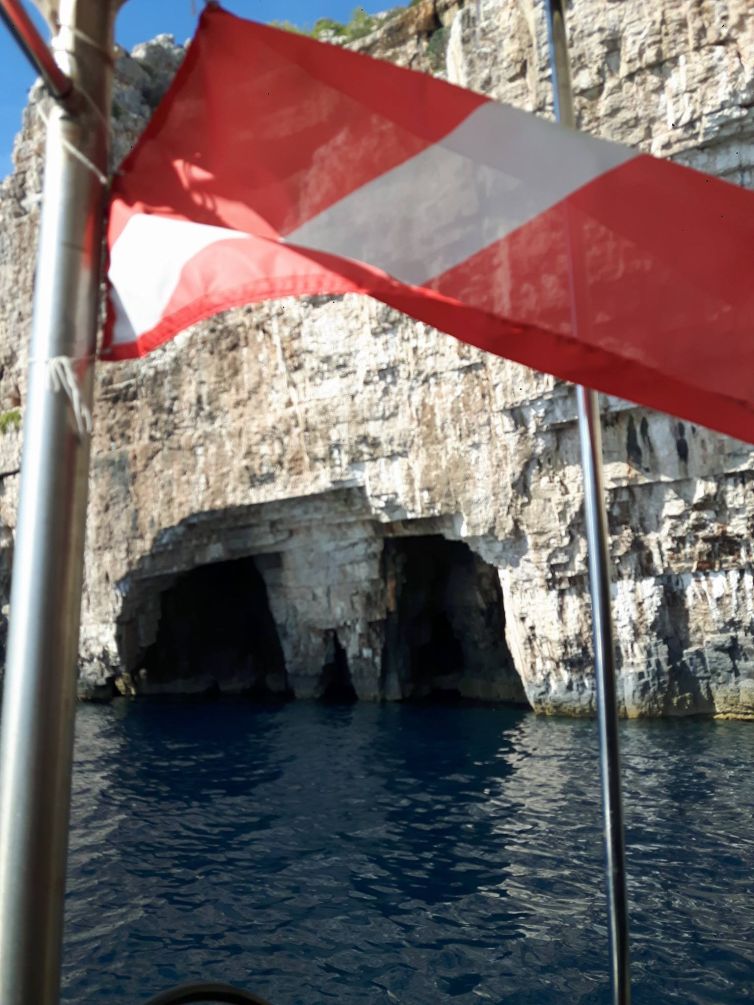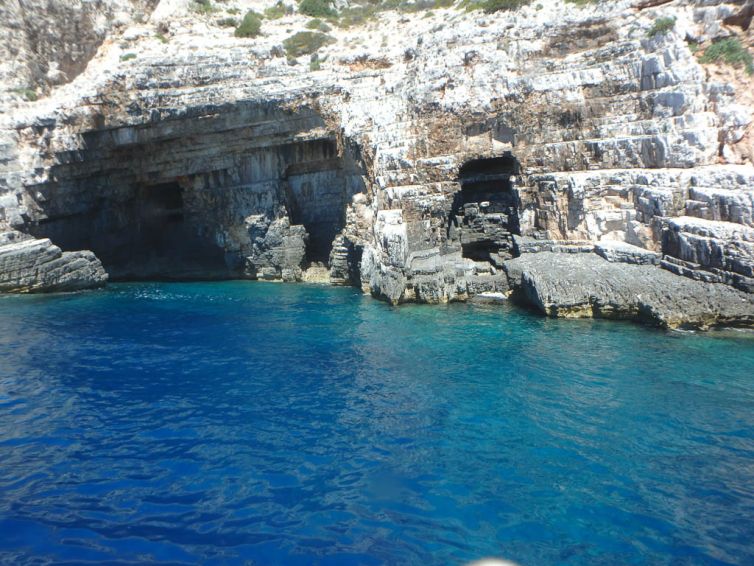Dive Sites
Gaće

dive site type: caves & caverns
difficulty: easy
depth range: 0-25 m
distance from the diving center: 11.5 nm
short characteristic: a slope transforming into a wall at the depth of 10 m (going down to 20-25 m) with a few caverns at different depths, one of which resembles a three-aisled building
The southern coast of the island of Vis is on one hand picturesque coves, like the Molo Trovna and Pritišćina or Štiniva, hailed in 2016 as the most beautiful beach in Europe, and on the other, humongous, vertical walls majestically emerging from the sea. These walls are made of rocks of various shapes. In one of them, the Croats see something like shorts and call it pants (Croatian word gaće means just panties).
Although the dive at Gaće is drift, it is suitable for the beginners – the sea here is rarely rough, and there are almost no currents under the water. Diving begins near the rock from which the place took its name. “Pantlegs” indicate the entrance to a cave. The cave can be entered by one of the holes and then divers – keeping the depth of about 4 m – swim around the pillar to exit the cave with the second opening. Diving continues along the wall, which from the surface to the depth of about 10 m has a low gradient, but below this depth it falls vertically to about 20-25 m.
Admiring the trick of the light on the rocks, the divers reach the next cave – this time situated a bit deeper. With a ceiling at the depth of about 11 m and a ground at around 15 m, this cavern resembles a three-aisled building – the chamber is divided into three parts by the columns in the entrance. Due to the size of the cavern, the whole entrance can be seen from the inside, what makes a good impression. The cave is abundantly covered with colourful sponges, and in front of it there are living spiny lobsters and moray eels.
Continuing the dive along the wall, the divers reach the place where diving usually ends – a deep vertical crack, probably a remain of the latest glaciation. All the time having contact with the light and seeing the surface of the water, the divers swim deep into the rocks. In here divers usually reach the depth of the safety stop, because the shallowest part of the crack goes the furthest into land. The walls of the crack are relatively dark and very colourful. On the overgrowing them organisms often feed, growing up to 20 cm long, green-yellow nudibranches of the species Felimare picta.





